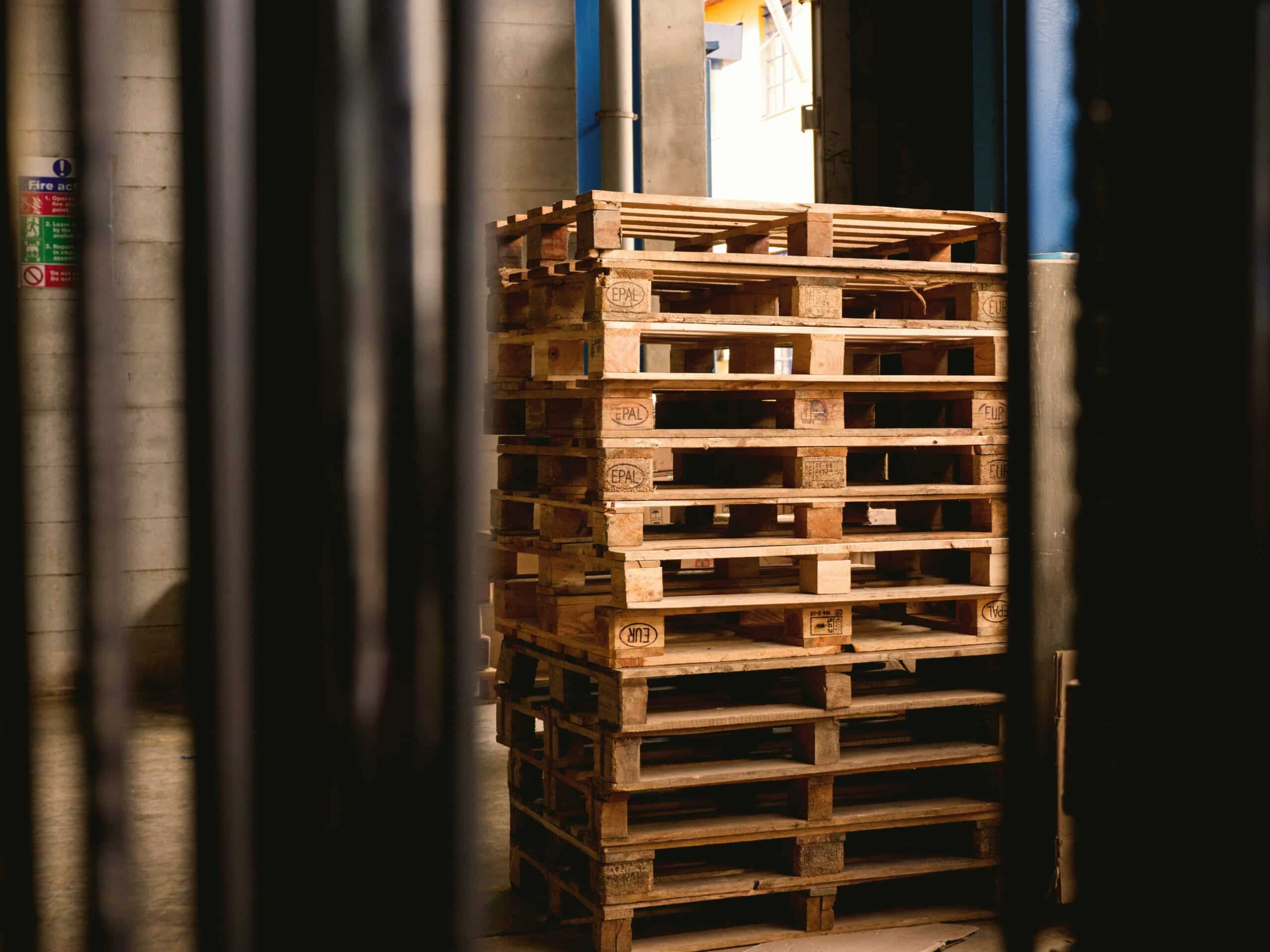The 4 main types of palettes
There are different types of pallets that are used for different types of transport.

Wooden palettes
Wooden pallets are the most traditional and most widely used type of pallet. They are inexpensive, robust and versatile, but susceptible to mould and pest infestation.
Plastic palettes
Plastic pallets are becoming increasingly popular due to their durability and hygiene. They are particularly suitable for the food and pharmaceutical industries. Although they are more expensive to purchase, they offer a longer service life and are easy to clean.
Metal palettes
Metal pallets are ideal for heavy-duty applications. They are extremely durable and resistant to corrosion, but are also heavier and more expensive than wooden and plastic pallets.
Paper palettes
Paper pallets are an environmentally friendly option and are mainly used for light loads. However, they are not as robust as other pallet types and are less suitable for heavy or damp goods.
The most important selection criteria for the right pallet
What criteria are used to select the ideal pallet for transporting goods?
Durability and maintenance
– Plastic pallets offer the longest service life and are low-maintenance.
– Wooden pallets are easy to repair, but require regular maintenance.
The cost factor
– Wooden pallets are cheaper to buy, but have a shorter service life.
– Plastic and metal pallets are more expensive, but offer long-term cost savings thanks to their durability.
Sustainability
– Wooden and paper pallets are biodegradable and can be recycled.
– Plastic pallets can be made from recycled material.
Hygiene
– Plastic and metal pallets are easy to clean and therefore ideal for the food and pharmaceutical industries.
– Wooden pallets can present hygiene problems.

Load capacity of the pallet
– Metal pallets are suitable for transporting heavy loads.
– Wooden and plastic pallets are suitable for light to medium-heavy loads.
Conclusion
Choosing the right type of pallet is a crucial factor in logistics and goods transport. This decision should be based on a careful consideration of factors such as budget, industry specifics, environmental awareness and specific transport requirements. In modern logistics, the wide variety of pallet types offer a rich selection of options that allow companies to find the most suitable solution for their individual needs. Whether wood, plastic, metal or paper, each pallet type has its own advantages and disadvantages that need to be considered to ensure the efficient, safe and cost-effective transport of goods. What is the best way to pack pallets? We explain it here.









